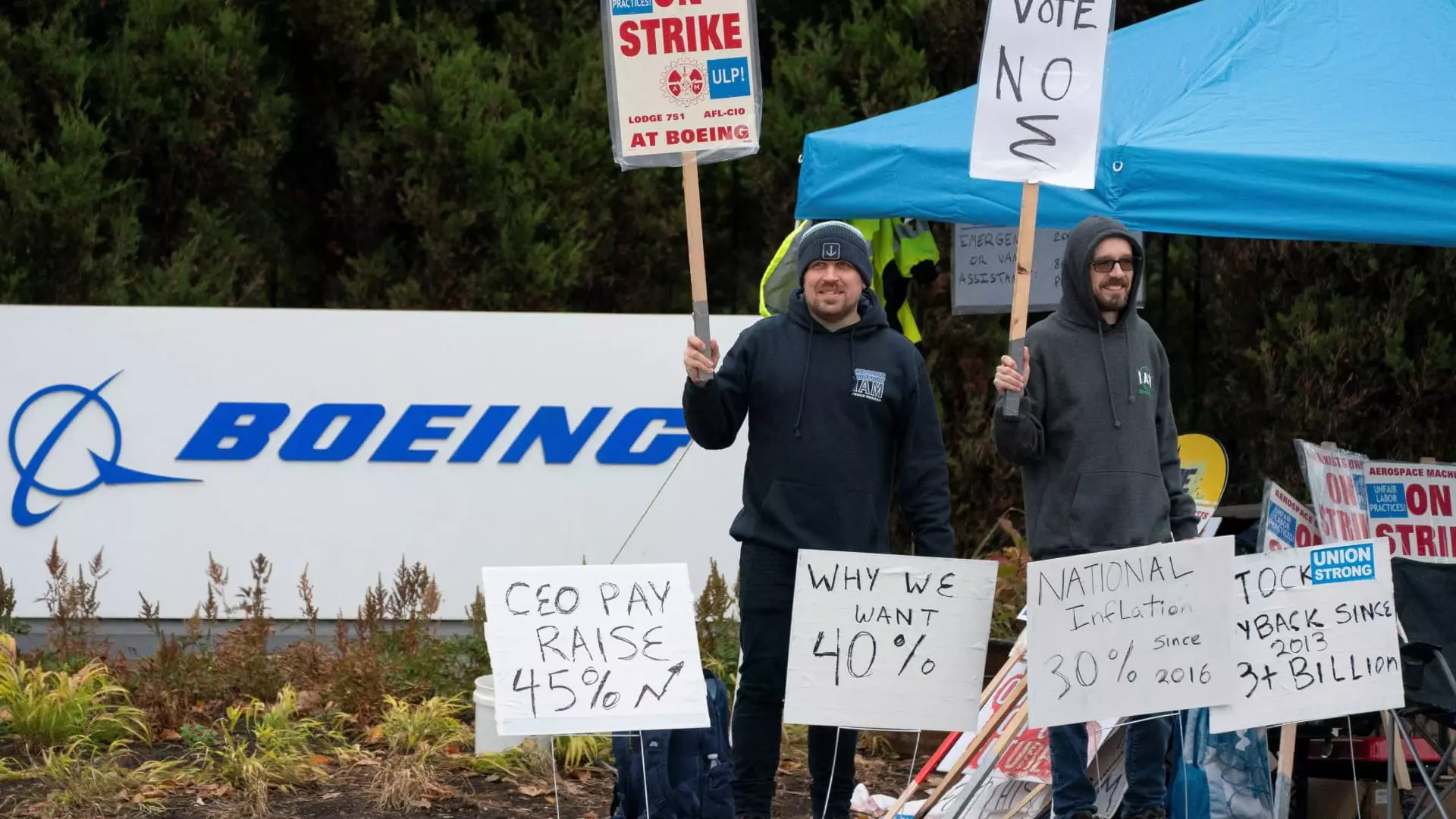After seven weeks of a debilitating strike, Boeing and its machinists’ union, the International Association of Machinists and Aerospace Workers District 751, are finally at a crucial juncture with a new negotiated proposal to enhance worker compensation. Set for a vote on Monday, this potential agreement may signify a turning point for over 32,000 machinists who, more than a month ago, walked off their jobs, rejecting a tentative deal. The urgency of resolving this work stoppage has escalated for Boeing, which is grappling with escalating losses and striving to restore its operations.
The recent proposal, which boasts a 38% wage increase over four years, is a step up from the previous 35%. The cumulative effect of these raises results in an impressive near 44% growth in pay, as the union has emphasized the importance of reaching a favorable compromise. Furthermore, the workers stand to receive either a one-time bonus of $12,000 upon ratification or a previous option of a $7,000 bonus accompanied by a $5,000 contribution to their 401(k) plans. The union’s insistence on a vote emerges from a collective belief that prolonged striking would not serve their interests, particularly as they acknowledge the concessions made thus far.
This strike, which began on September 13, highlights the challenges faced by Boeing in an era defined by heightened operational costs and competitive pressures, particularly in the technology sector surrounding Seattle. The rejected proposals have demonstrated that the machinists’ demands for higher wages are informed not only by the current state of the economy but also the increasing cost of living in the area. The rapid growth of technology firms has exacerbated the situation, resulting in heightened financial expectations from Boeing employees.
As the union negotiators weighed their power to invoke significant leverage through the strike mechanism, it became evident that they reached a critical point of exhaustion—having obtained as much as possible from negotiations while recognizing the risks of falling back on lesser offers. The union has articulated the importance of a swift resolution; staying on strike longer may jeopardize their hard-won gains.
In a message to the workforce, Boeing CEO Kelly Ortberg emphasized the need for unity and collaboration to stabilize the company and reestablish its foothold in the market. The pressure on leadership was palpable, particularly following a period filled with financial turmoil, including a staggering loss of over $6 billion in the last quarter and forecasted challenges moving into 2025.
The Biden administration’s involvement has added another layer of complexity to these negotiations. Acting Labor Secretary Julie Su met with both parties in hopes of fostering dialogue and accelerating a resolution that would benefit both the workers and the broader economy. The impact of the strike rippled through U.S. employment figures, which were released just as President Biden commended both the union and Boeing for their efforts toward reaching a viable agreement.
Despite the potential positive outcomes of this latest proposal, some nagging issues remain unresolved. One particularly contentious point is Boeing’s relocation of 787 Dreamliner production to a non-union facility in South Carolina, which has been a sore point for many workers in the Puget Sound area. Their sentiments reflect a broader concern: job security and the long-term viability of their roles in a shifting manufacturing landscape.
The broader implications of the strike reach beyond labor negotiations; they underscore enormous operational challenges that continue to trouble Boeing’s leadership. Quality control issues, production delays, and safety concerns—such as recent incidents with the Boeing 737 Max—have further strained the company’s reputation and fiscal health. The road ahead for Boeing may still involve significant hurdles, but the direction established by these negotiations provides a glimpse of possible recovery and stability for the aerospace giant if both parties can come together in agreement.
As both the company and its employees brace for the outcome of the vote, the essential takeaway remains clear: effective collaboration is key to navigating the turbulent waters of the aerospace industry. Whether the new proposal is ratified or not, the underlying dynamics of labor relations and corporate responsiveness will undoubtedly shape the future trajectory of Boeing and its workforce.


Leave a Reply